49,00 € – 69,00 €
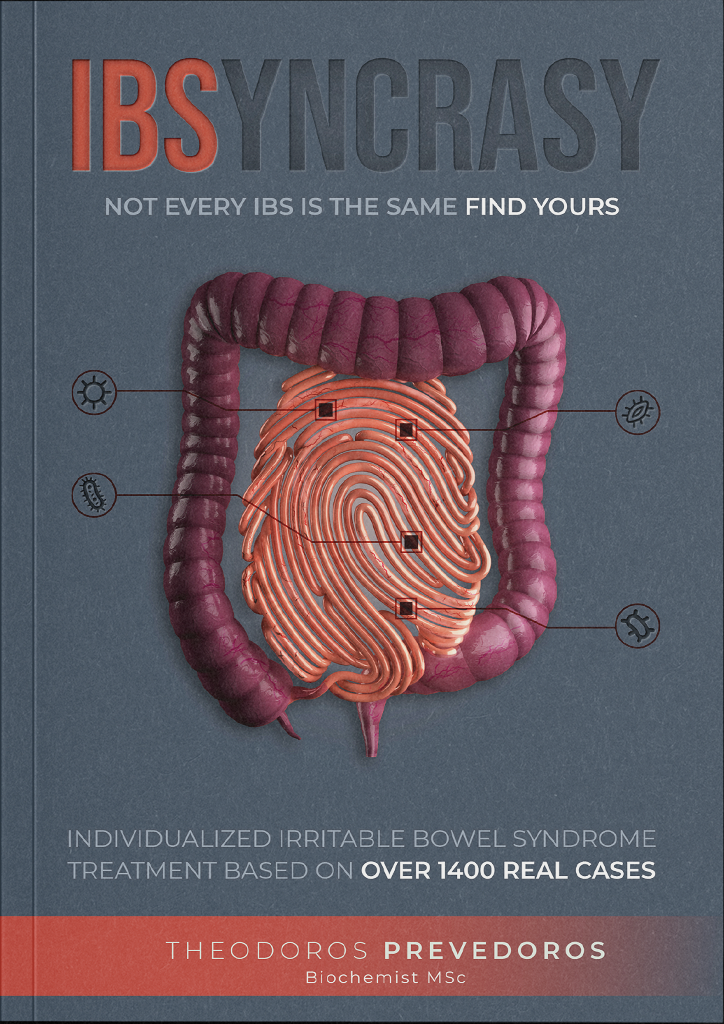
IBSyncrasy
- a distinctive feature or characteristic of a place or thing or person…
Every human is unique…. every action, movement and thought is processed and executed in his own idiosyncratic way. The same applies to human pathologic states like Irritable Bowel Syndrome. Every human responds differently to the same symptom, to the same underlying cause and to the same trigger, whether it is a food reaction or a minor surgery. Therefore, as unique are someone’s healthy characteristics, the same applies to his disease symptoms. And when it comes to IBS, every one exhibits their one idiosyncrasy…. their IBSyncrasy
49,00 € – 69,00 €






It is a spectrum of different symptoms stemming from each patient’s individuality. By mining all the biochemical data of a patient, a unique treatment is revealed, according to their IBSyncrasy
How digestion works in real life (and not in textbooks)
How digestion works in real life
How digestion works in real life (and not in textbooks)
How digestion works in real life (and not in textbooks)
How digestion works in real life (and not in textbooks)
How digestion works in real life (and not in textbooks)
How digestion works in real life (and not in textbooks)
How digestion works in real life (and not in textbooks)
How digestion works in real life (and not in textbooks)

- Constipation
- Flatulence
- Abdominal pain
- Gas
- Diarrhea
- Indigestion
- Bloating
- Movement Inconsistency
- THE THEORY
- How digestion works in real life (and not in textbooks)
- Why “not” eating is equally important to eating
- How your gut is interconnected with all your organs
- Why you should treat your gut like an organ that resides outside your body, like your skin (Hint: it does)
- Food is not the problem, merely the messenger of the symptom
- How time is imprinted within our genome and dictates digestion
- THE PRACTICE
- How to identify your IBSyncrasy
- What you have in common with other patients (and what to do about it)
- Which are the correct exams that will reveal your own pathology
- The exact treatment for your case
- Which additional therapeutic modules will accelerate your healing
- What to do to remain healthy after the treatment
SECTION A
From advanced biochemistry to 4,500 medical histories
Human homeostasis is not something that can be described in a textbook. It cannot even be defined properly because parts of its definition are still not known. It is the sum of all the trial-and-error procedures happening in the human ecosystem, and all the ecosystems before humans, that led to the concept of human life. So, trying to heal a disordered homeostasis by giving a supplement or a drug is not an option, or at least not a viable one. Supplements and drugs are tools. Tools that work only when used properly and timely. The very first prerequisite for healing and curing a diseased state is the adherence to our evolutionary standards and respect to all the components that make us what we are; a multi-system symbiotic multi-cellular machinery with the highest degree of sophistication known so far.
And when it comes to the gastrointestinal tube things get a lot more complicated. Because besides human biochemistry, an additional amount of 100.000.000.000 biochemistries are added with thousands of different genomes interacting with each other and with the host.
How can so many different molecular alterations only produce the generally accepted 800 symptoms that exist? It is easily understandable that there are plenty of different combinations that may bring the same disease or the same symptom to the surface.
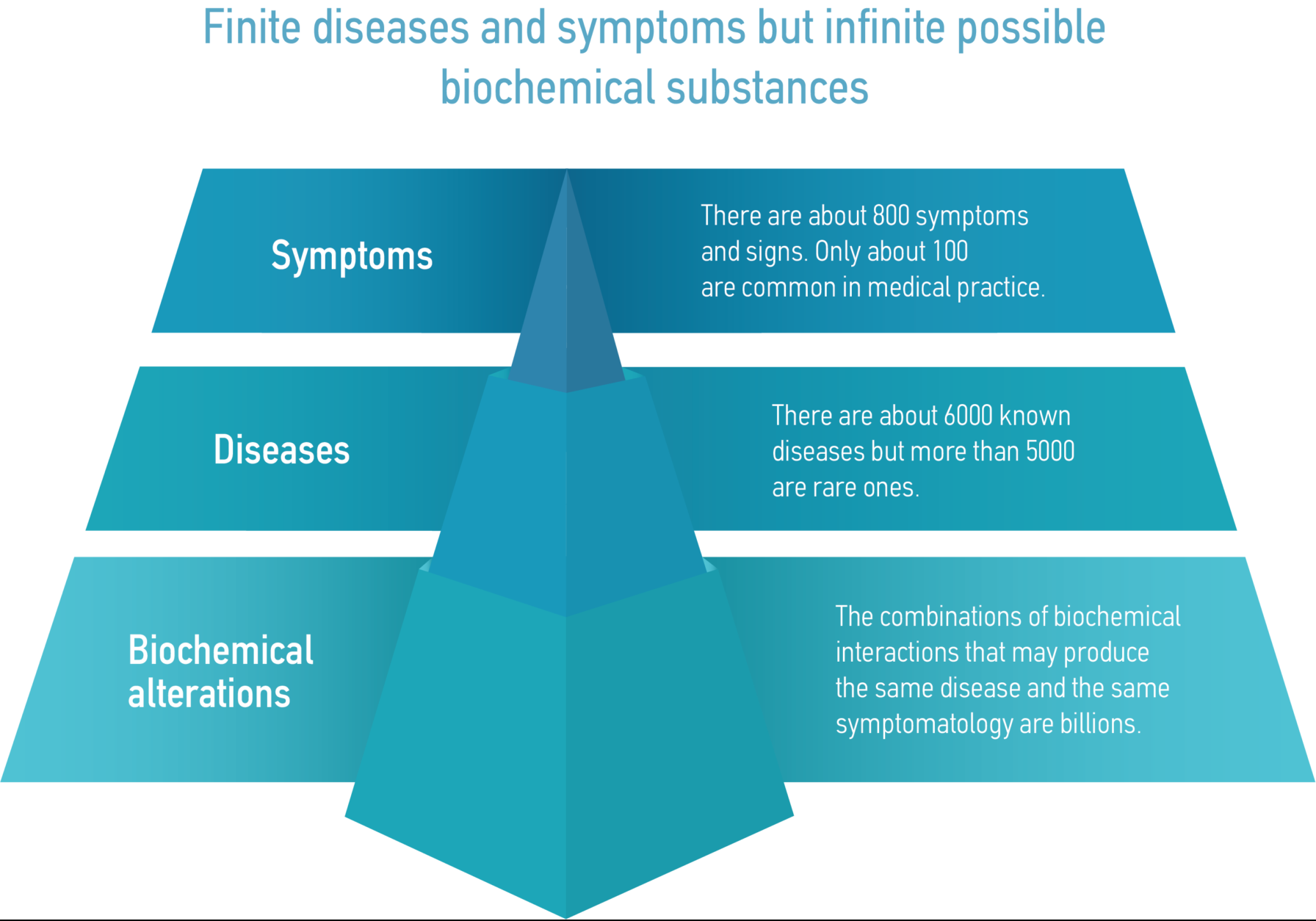
Let us take nausea as an example. Nausea is just a symptom; it may be a symptom of Meniere’s disease, or a symptom of a labyrinth problem, or it may appear in the context of gastroesophageal reflux disease or even from hemorrhoids bleeding. Nausea may be a symptom in the context of hundreds of diseases, and each and every one of these diseases may be the result of thousands of different biochemical malfunctions. So just by treating nausea, it does not mean that you repair the biochemical anomalies that induced it in the first place, and, of course, every single patient suffering from nausea needs different management. That is where clinical biochemistry comes into the picture. All the data that can be extracted in a 2-hour session, combined with the patient’s symptomatology, help us isolate specific biochemical systems for further diagnostic checking.
While most think that a doctor should be highly trained in medicine and only in medicine, in my opinion storytelling should also be part of their education. The ability of a doctor to persuade the patient to change his daily routine to get well is of the utmost importance. This is because a large proportion of patients rely solely on taking a medication or the result of an operation.
Reasons why a treatment may fail that has nothing to do with the treatment scheme:
- The patient stops the treatment prematurely
- The patient changes the dosage at will
- The patient read something on the internet
- The patient is seeing more than one doctor at the same time
- The patient cannot get in touch with his/her doctor
- The doctor does not inspire confidence
- The doctor is not answering the patient’s questions
- The timing of the treatment is not correct
- The doctor rejects symptoms that he/she is not familiar with
- The doctor is unwilling to give lifestyle and dietary advice, despite the patient asks for it
When the patient is asked all the triggering factors of their symptoms, stress and anxiety are always present. In most cases, acute stressful situations induce diarrhea or bloating, whereas more chronic anxious states induce constipation. The opposite may be also true. As a result, patients think that stress is the primary cause of their IBS and that if they resolve it, IBS will disappear. Unfortunately, many physicians tend to accentuate this notion by telling their patients the typical phrase: Don’t worry, there’s nothing wrong with your gut, it’s all in your head!
Why do most irritable bowel patients associate stress with symptom exaggeration?
The answer lies in the role stress plays in the evolution of the human species. And it is well explained. To cut a long story short stress is an exaggerating factor for IBS symptoms and not the root cause of IBS pathology.
During my 15 years of practice I have tried many therapeutic modules which involve all aspects of everyday life besides, of course, pharmaceuticals and nutraceuticals. These aspects involve dietetic, nutritional, lifestyle and psychological interventions. Many proved to be of no help, either because they were too hard to implement, or they just did not work. Some of them, though, proved to be very useful – if practiced correctly, they are not just an add-on to the treatment, but an invaluable part of the healing process. The module-pyramid depicts the importance of each layer and the magnitude of contribution to the treatment.
Your gut has its own stopwatch
Some call it time-restricted feeding, others intermittent fasting (IF). Well, I call it common sense. It is the process of eating, and not the food itself, that is destroying your gut – … when digestion finishes, another energy-consuming period begins, the post digestive one. Now that all the debris, killed bacteria, bile, and food particles have accumulated in the small intestine, they have to be eliminated. This process is also very important in evolutionary terms, since it is regulated by the brainstem itself; the base of the brain. Even 4-6 hours after the previous meal, rigorous and repeated movements must be allowed to happen in order to forward every single piece of debris to the colon for stool formation to take place.
Time is imprinted in our genes
The 24hr light-darkness cycle is not just an external environmental phenomenon, but a crucial regulator of almost every biochemical reaction humans possess. Besides the three structural dimensions (height, width, depth), time is also an integral part of our physiology. However, unlike the others, the dimension of time is invisible and thus hard to comprehend. This 4th dimension is deeply imprinted inside our genome and in the last 20 years more and more functions of these “clock” genes are being uncovered. Disrupting our circadian clock predisposes us for many chronic diseases. It is no wonder that night shift workers are more prone to almost all chronic diagnoses.
Different tests tell different stories
The most common phrase I hear in my office from patients in our first meeting is “I have done every test possible” and, indeed, in terms of mainstream practice, all the tests have been done – tests to exclude cancer, to exclude Crohn’s disease or ulcerative colitis, to exclude H. pylori infection or celiac disease and any number of other inflammatory and malignant disorders. However, IBS is a functional disorder. It is a set of symptoms giving rise to an individual phenotype. So, what is the use of these tests and procedures besides excluding more serious diseases? In the classic view of IBS, none, because these tests are used to exclude and not diagnose, and as with every other organ in our body the best way to find out what is going on with the bowels is by searching in their own product. Stools are the carrier of gut pathogenicity and the best way to find out what is going on is to use them as diagnostic sample. In addition, several blood and urine tests are helpful for the final diagnosis.
Your gut is vegetarian
It may sound counterintuitive to fiber up, as dietary fiber is the most common cause of abdominal distension and IBS exaggeration. But if sone the right way, it is the only option for long-term symptoms relief.
Up to 99% of the total intestinal microbial load resides in the last part of our gut, the large colon. This approximately 1.5-meter-long tube is covered, in its luminal face, with several millimeters of mucus which is where most of the bacteria live. The mucosal lining is characterized by different physicochemical properties depending on the part of the intestine in which it resides. These different microenvironments are decisive for the kind and the number of bacteria it hosts. What is important is that the colonic environment is an anaerobic one and, thus, the reactions that feed our microbiome and help them produce vitamins and postbiotics will as well be anaerobic. This is the reason why plant fiber (anaerobic fuel) is their food of choice.
They just don’t work
Almost every patient I have consulted has already tried at least one brand of probiotics; either prescribed by a practitioner or suggested by a friend. Usually, patients report that they did notice some benefit, although symptoms persisted. Others do not see any improvement, while some of them report that they actually got worse. It is natural for probiotics to give such diverse results because there is no guarantee that a random probiotic is what you need or even if it is the right one. There is no way to know whether the specific strain, in the specific amount, taken in combination with other competitive strains will eventually colonize in the correct gut segment. The probability of healing while just taking a random probiotic is the same as winning the lottery… twice. By healing we are not talking about a statistical improvement in a symptom or two; we mean full symptom resolution, for good.
A few factors determining the kind of probiotic needed:
- Diet
- Previous medical treatments
- Geographic location
- Bowel habits
- Systemic diseases
- Mode of delivery
- … many many more
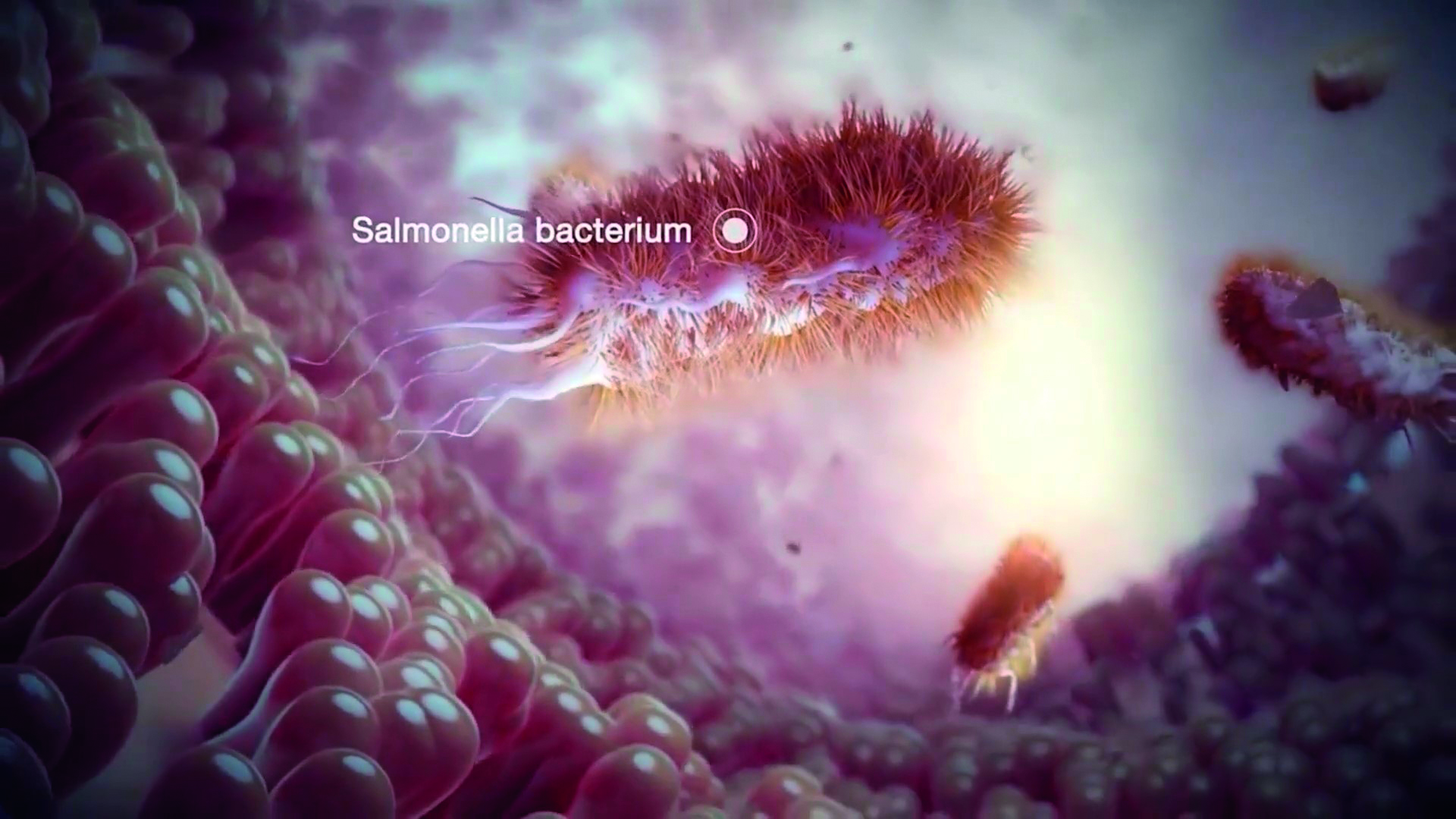





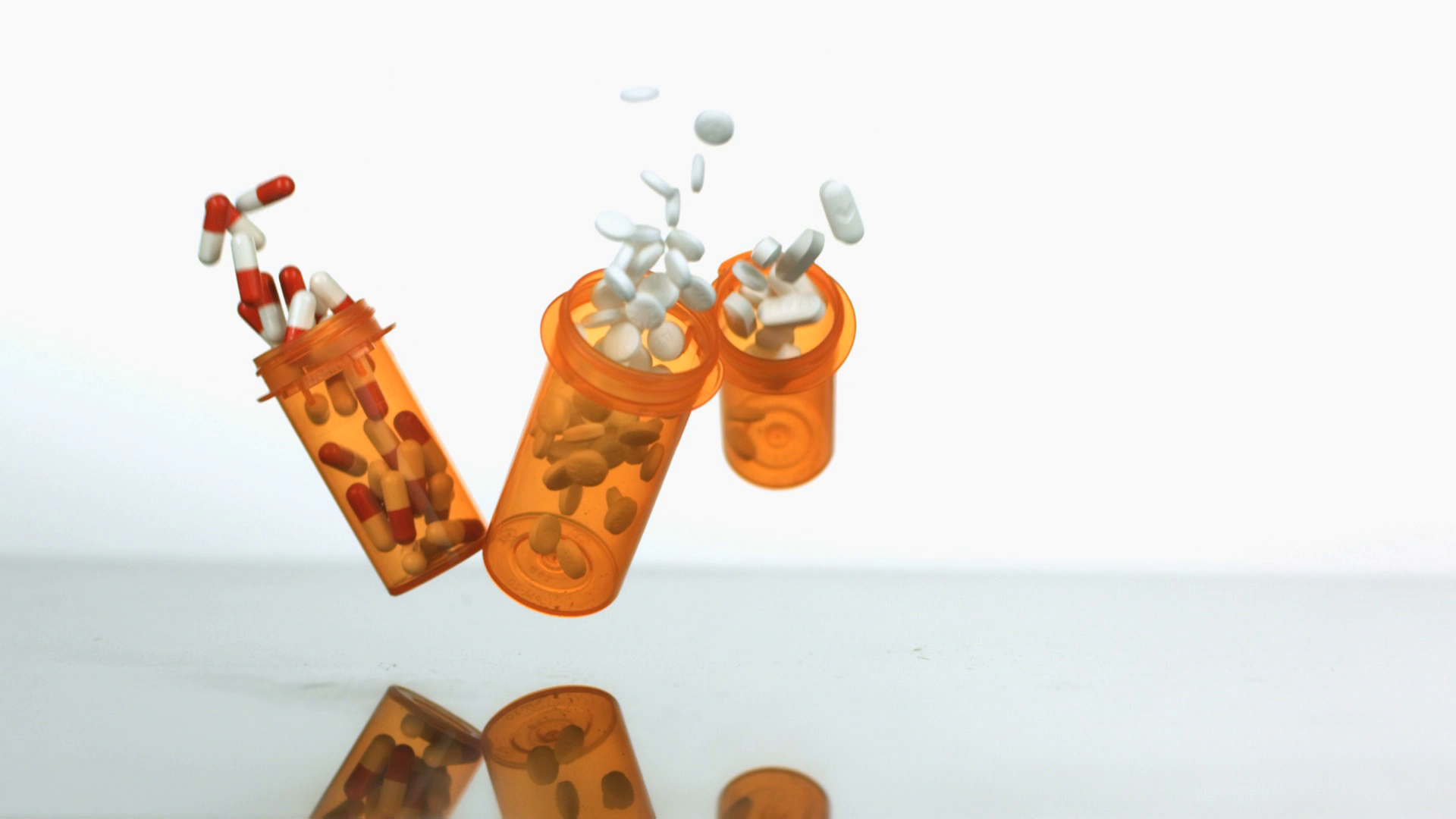
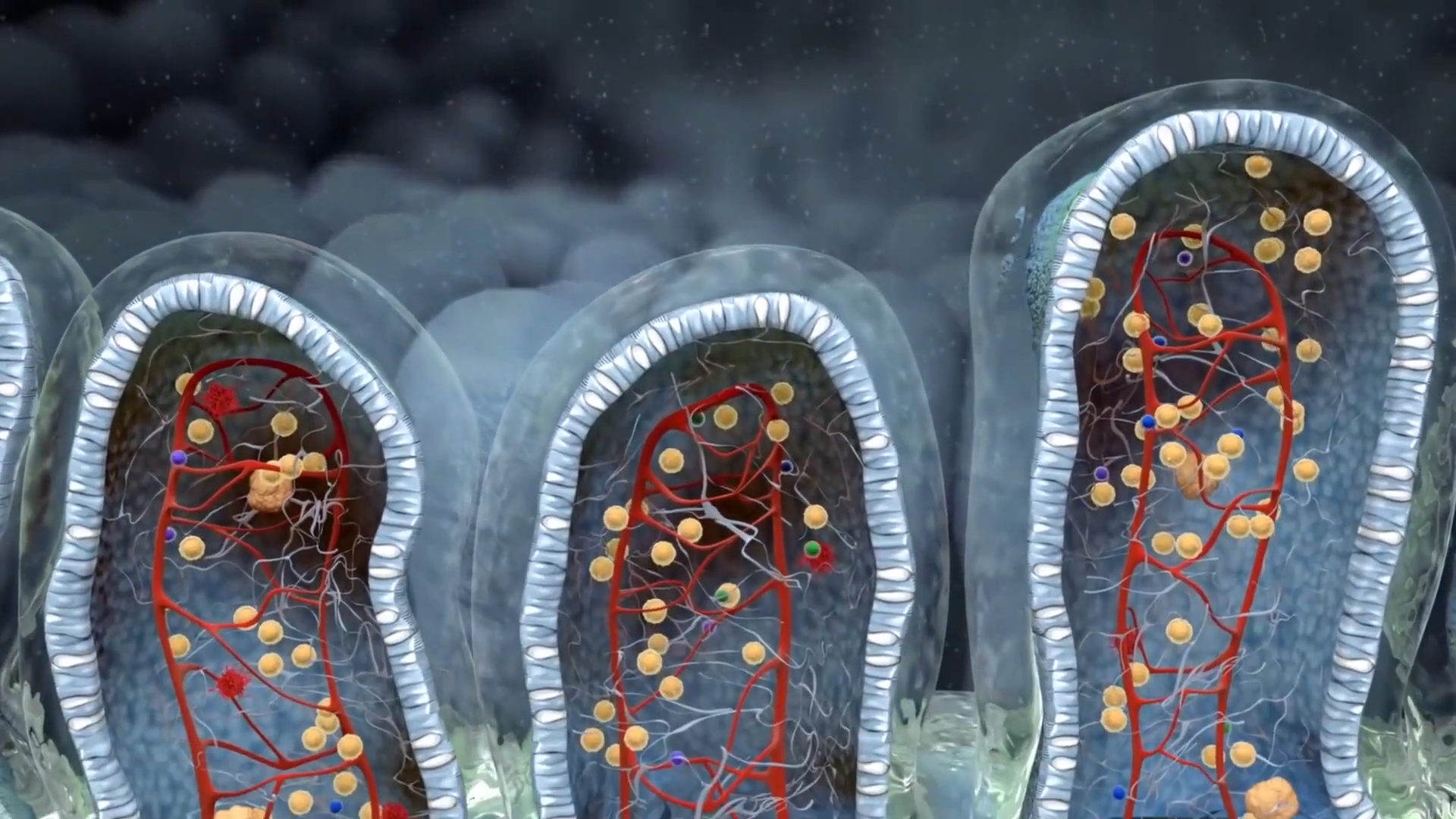
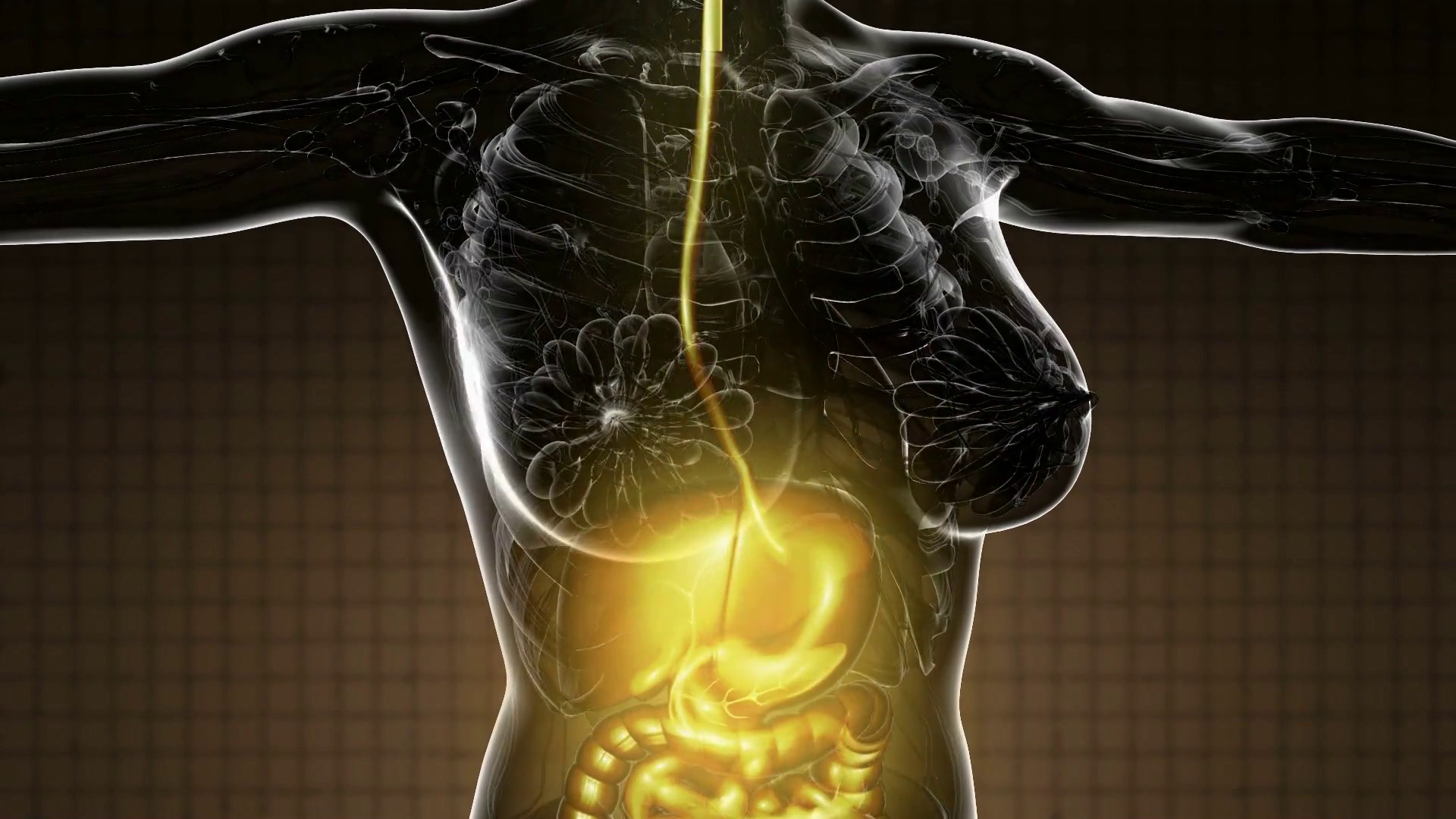

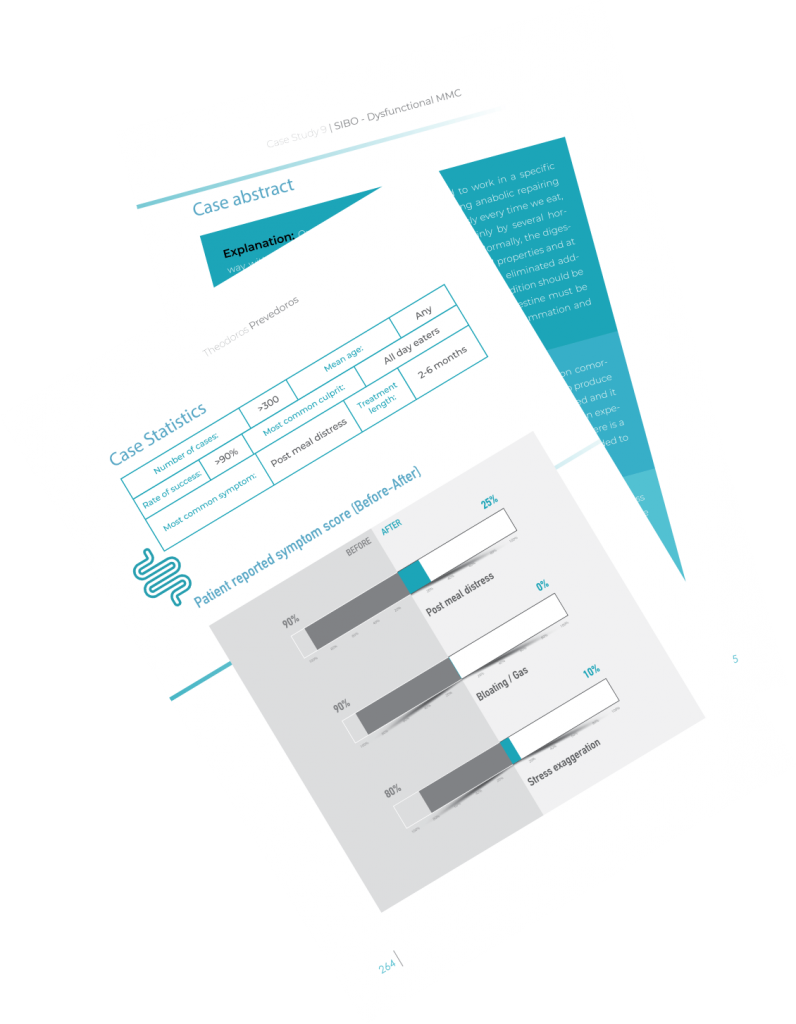
- Demographics
- Whom this case concerns
- What do people suffering from this kind of IBS have in common
- Age, gender and ethnicity affected mostly by this IBSyncrasy
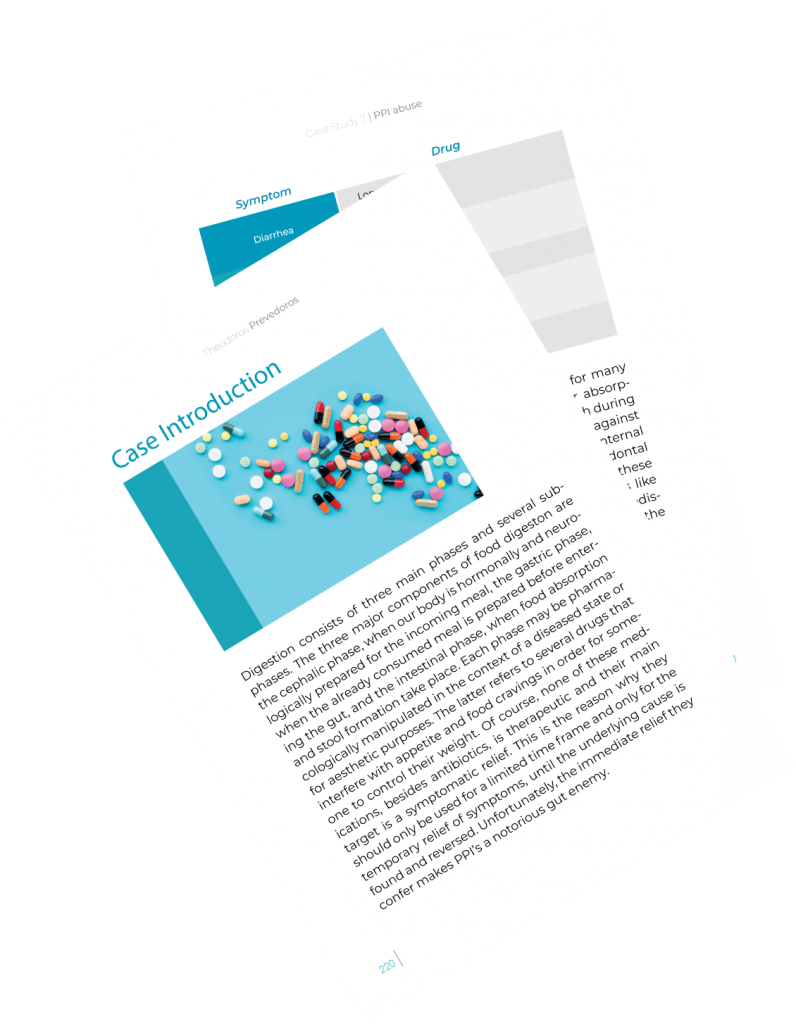
- Introduction
- Analytic and comprehensive presentation of this IBSyncrasy
- Which are the common risk factors. Maybe you will find yours
- How it differs form other IBSyncrasies
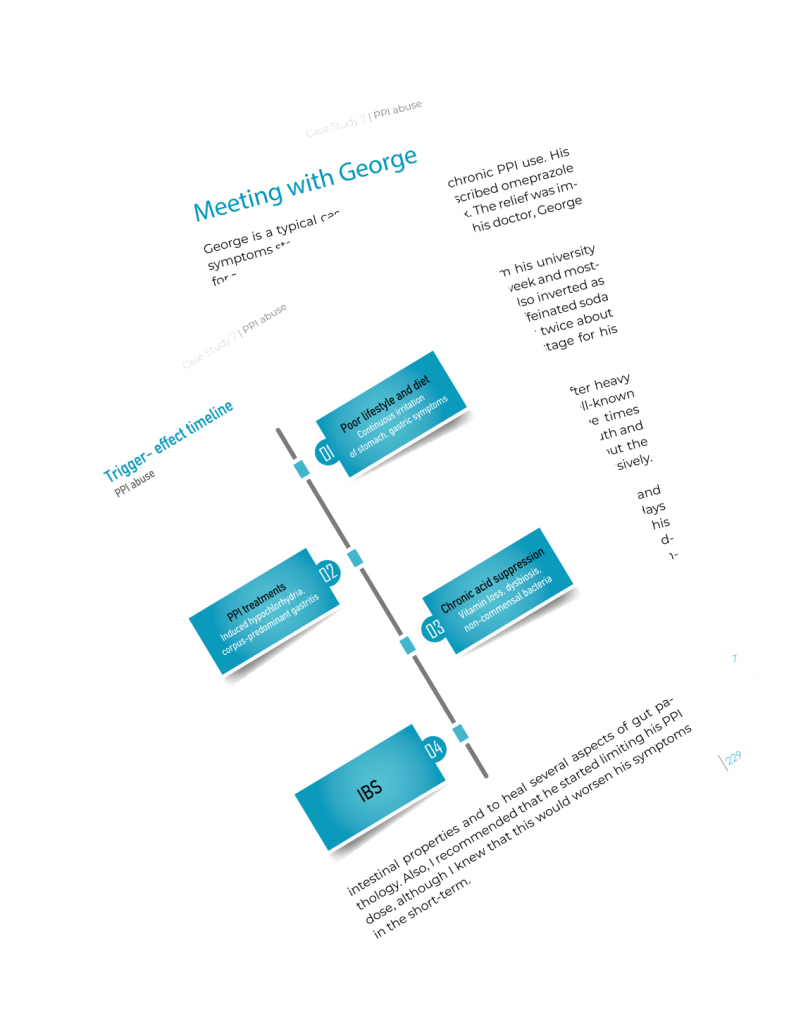
- Meeting
- Common medical, dietary and behavioral history of this IBSyncrasy
- All therapies and diets that failed in the first place
- The diagnostically useful data of this IBSyncrasy and the ones that don’t matter
- The importance of storytelling
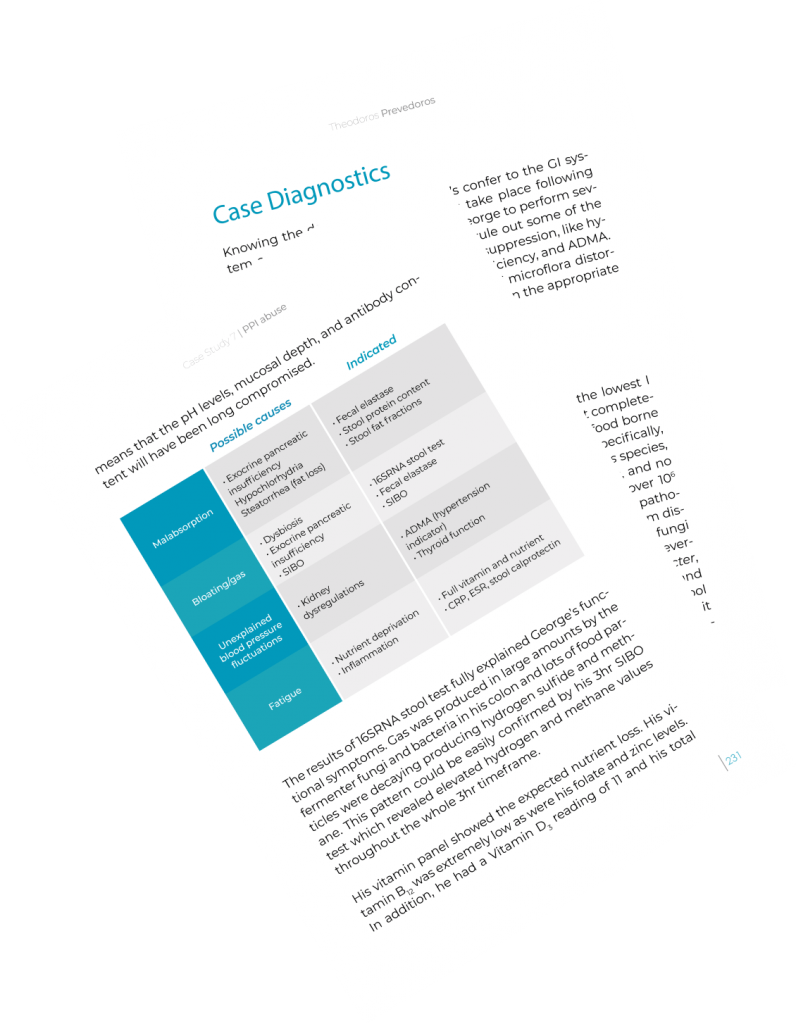
- Diagnostics
- Which diagnostics were chosen and on what basis
- How symptoms and triggers translate to specific tests
- Why most of the patients’ past exams were diagnostically useless
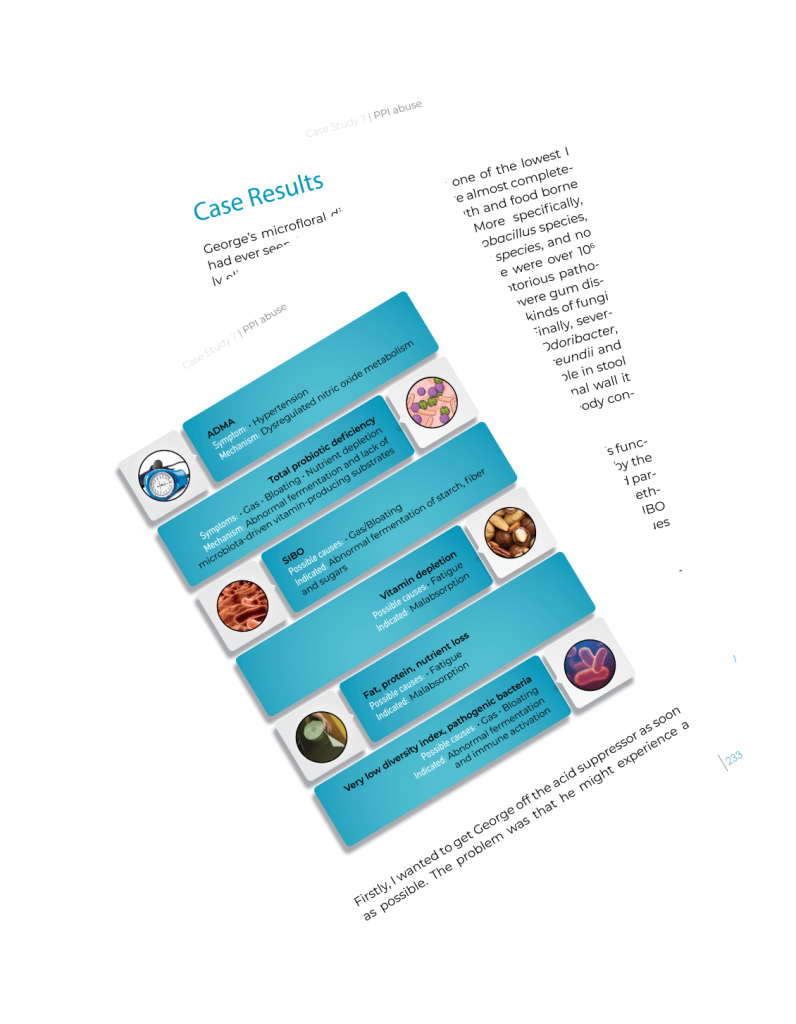
- Results
- Every result explained in simple terms
- How the results relate to patient’s IBSyncrasy
- Tha exact mechanism of each finding’s pathogenicity
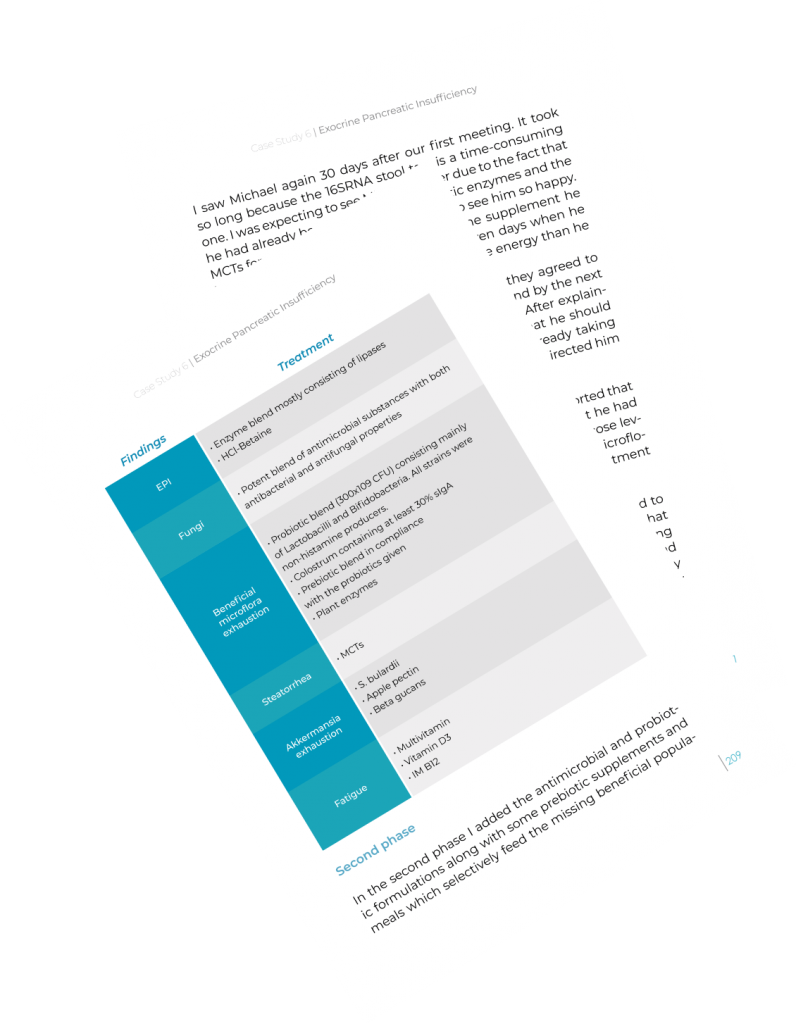
- Treatment
- Every treatment aspect explained in simple terms (medicines, supplements, nutrition, behavioral interventions etc.)
- How treatment changes according to every patient’s IBSyncrasy
- What are the determining factors that will make you adhere to the treatment all the way
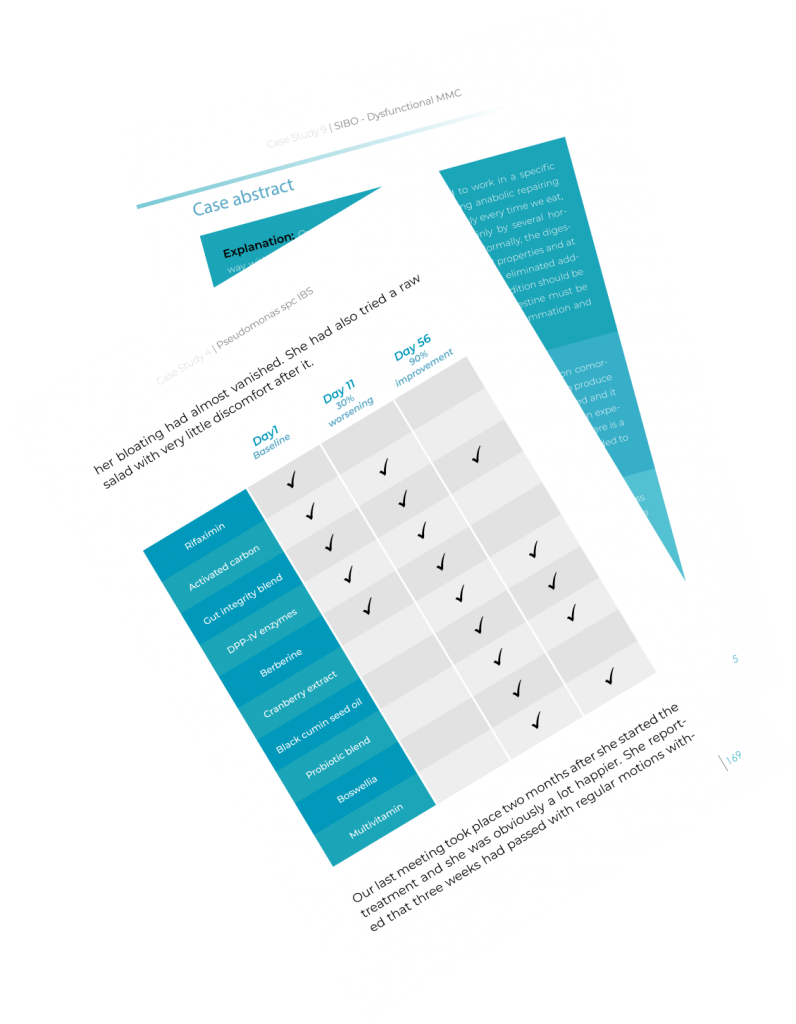
- Follow up
- How to identify deviations from the treatment and correct them in real-time
- How long each IBSyncrasy takes to heal
- Why every individual’s findings and history define the outcome and the duration of treatment
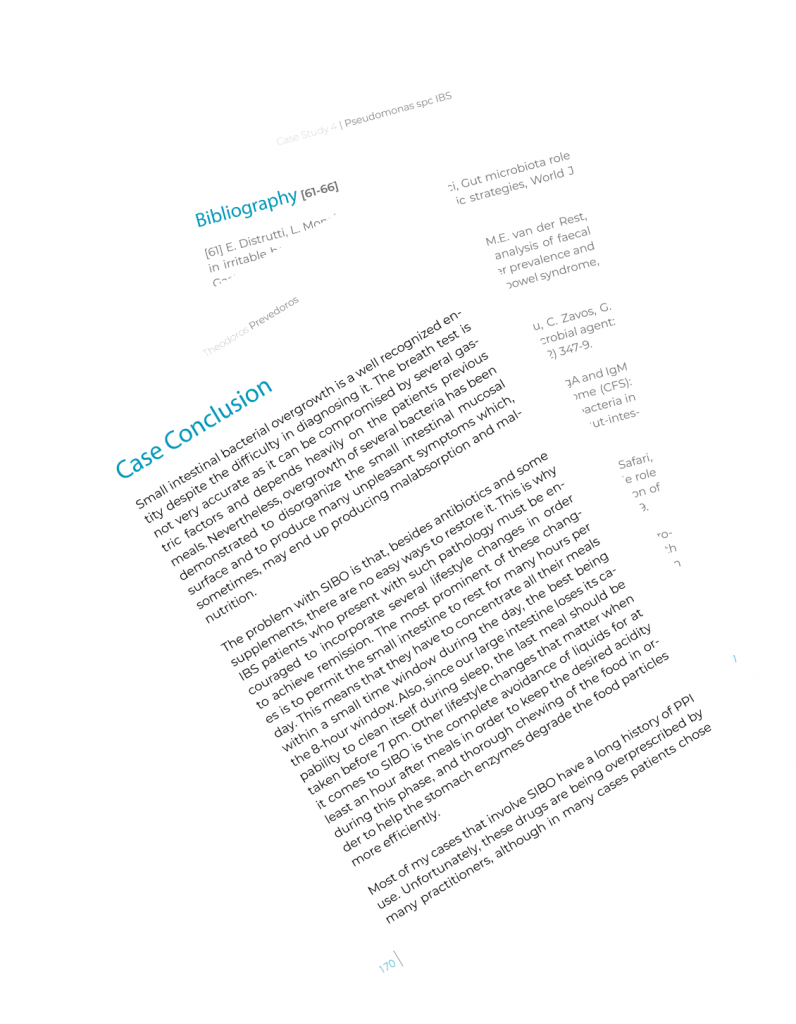
- Conclusion
- Why this IBSyncrasy could not be treated as a disease but as an individual IBSyncrasy
- How Biochemistry helped to identify the real culprits behind this case

- Demographics
- Whom this case concerns
- What do people suffering from this kind of IBS have in common
- Age, gender and ethnicity affected mostly by this IBSyncrasy

- Introduction
- Analytic and comprehensive presentation of this IBSyncrasy
- Which are the common risk factors. Maybe you will find yours
- How it differs form other IBSyncrasies

- Meeting
- Common medical, dietary and behavioral history of this IBSyncrasy
- All therapies and diets that failed in the first place
- The diagnostically useful data of this IBSyncrasy and the ones that don’t matter
- The importance of storytelling

- Diagnostics
- Which diagnostics were chosen and on what basis
- How symptoms and triggers translate to specific tests
- Why most of the patients’ past exams were diagnostically useless

- Results
- Every result explained in simple terms
- How the results relate to patient’s IBSyncrasy
- Tha exact mechanism of each finding’s pathogenicity

- Treatment
- Every treatment aspect explained in simple terms (medicines, supplements, nutrition, behavioral interventions etc.)
- How treatment changes according to every patient’s IBSyncrasy
- What are the determining factors that will make you adhere to the treatment all the way

- Follow up
- How to identify deviations from the treatment and correct them in real-time
- How long each IBSyncrasy takes to heal
- Why every individual’s findings and history define the outcome and the duration of treatment

- Conclusion
- Why this IBSyncrasy could not be treated as a disease but as an individual IBSyncrasy
- How Biochemistry helped to identify the real culprits behind this case